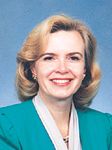- Case-Based Roundtable
- General Dermatology
- Eczema
- Chronic Hand Eczema
- Alopecia
- Aesthetics
- Vitiligo
- COVID-19
- Actinic Keratosis
- Precision Medicine and Biologics
- Rare Disease
- Wound Care
- Rosacea
- Psoriasis
- Psoriatic Arthritis
- Atopic Dermatitis
- Melasma
- NP and PA
- Skin Cancer
- Hidradenitis Suppurativa
- Drug Watch
- Pigmentary Disorders
- Acne
- Pediatric Dermatology
- Practice Management
- Prurigo Nodularis
- Buy-and-Bill
Article
How derms meet the need for their services - and deflect the overflow
One of the oft-repeated concerns in the dermatology field is about the "shortage" of dermatologists. Admittedly, that can vary from region to region, or even city to city.

The National Association of Physician Recruiters lists nearly 150 available dermatology positions around the country, which could be an indicator that a lot of patients are keeping practicing dermatologists rather busy.
How do dermatologists keep from being overwhelmed by the demand for their services? How do they determine the number of patients they carry on their patient rolls?
Mathematical matrix
There is a mathematical equation to help doctors determine an appropriate patient panel:
The number of provider appointments per day multiplied by the number of days worked a year equals the panel size times the number of patient visits a year.
The panel size is figured by taking the number of unique patients the physician has seen in the past 12 to 18 months and determining how many visits to the office those patients averaged.
Many dermatologists don't use an equation nearly as much as they go by instinct: How many patients do they feel comfortable handling?

Setting the bar
The prevalence of HMOs in California makes it difficult to control the number of patients physicians keep on their so-called panels, explains Robert H. Lesnik, M.D., in Palm Desert, Calif.
That number is determined by the company, but he says it also means patients aren't necessarily overly loyal to a practice.
"If patients just need a check-up and really want to see me, as opposed to somebody else, they will wait two or three months. Usually, if we get backed up beyond a month, and the patients feel it's something important, they will start calling around and will probably go somewhere else."
Howard P. Ragland, M.D., in Slidell, La., voiced a view common to several of the dermatologists who don't figure out how many patients they have - they look at how long patients have to wait for an appointment.
"We have about 19,000 active charts, with three doctors in the practice, and we keep charts active for about three years. We don't actually limit what we do by our complete panel; we limit what we do based on the patients' waiting time.

Part of the problem, according to Dr. Ragland, is that the patient load is often cyclical.





